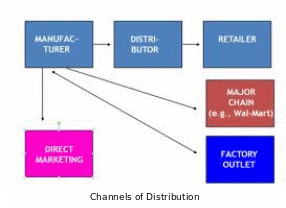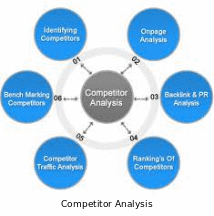Executive Summary
The present report is aimed at analyzing the potential market and target audience for the new product and outlining the key strategies for the operation of companies with the new product. As the device is supposed to be a microwave oven capable of two options such as heating and freezing, it is necessary to evaluate the idea and assess the market, technologies, appliances, and other related issues that should be taken into account concerning the essence of the new device operation.
Idea description
The key purpose of this project is to change the use of a microwave. Traditionally such devices are used to heat food or water; however, very little is being said about cooling. Therefore, a new appliance that would be able to cool and freeze food and beverages within a minute can find its niche in the market.
The idea as a set of business services
This business project focuses on product and critical success factors (Sadig & Racca, 2003). One of the critical success factors, in this case, is before and after-sale service. The company will need to establish numerous warranty service centers to attract customers and keep them satisfied as suggested in the study by Hurwitz et al (2006). Among other activities, we can single out order processing service, transportation service, and delivery service.
Road Map Requirements to support the business service
Appliances
The major appliance includes a laser and microwaves to heat and frozen products using this device. In this respect, laboratory, equipment, and necessary testing machines are necessary as well as experts in energy transformation who could conduct all tests and make alterations in the process of testing and operation of the device. First of all, it is necessary to know the technology of energy transformation from microwaves into the heat and from the laser into the cold.
The value created by the appliances
A company that intends to introduce a new product into the market must know exactly what qualities customers are looking for; for instance, multi-functionality, reliability, and safety (Ulwick, 2005, p 9). Another value-adding element is that the new cold microwave will not diminish the nutritious qualities of food; namely, it will not diminish the number of vitamins and proteins. Reuse of software and appliances should decrease the value of maintenance of the new device.
Technologies
The energy of the microwave can be converted into another type of waves: laser can shoot the atoms and make them cold while the atoms make the surrounding food cold as well. Additionally, we need to obtain hardware and software for the testing of this product. An alternative approach can be taken and scientists and experts in the field of energy and microwaves can be engaged rather than engineers who should be educated previously than deal with the device and its operation.
Scenarios for the future development of business services
The future development of the device can be analyzed regarding the situation in the market within five years. Technologies of reuse and environmentally-safe appliances would be the key concepts for success. Heating and cooling options in a single device can make the food and drinks cold or hot concerning the needs of a user. The design of remote control can be adapted so that a person could program the device to turn on and turn off at a definite time.
Scenarios for future appliances, services, and supporting services
We are a manufacturer of the device whose basic department is research and development. We can make microwave ovens portable, small and energy-efficient so that they can be used at home. The reuse of software and appliances can be environmentally-safe and energy-efficient. Online sales of this device can be brought into operation as well as the recruitment of engineers who can find alternative solutions and make this device a multifunctional unit. Besides, cooperation with the internationally leading manufacturers of home appliances can advance this oven into a new level as a part of kitchen equipment.
Market analysis
The market potential for business service
This invention can be of great use to people living in countries with a hot climate. This product can serve the needs of the individual, public, and corporate clients. So, many researchers are working on the idea of microwave freezing (Sun, 2005). Additionally, one can assume that they will be living in areas with a very hot climate, for example, Africa, the Arab States of the Persian Gulf, South America, as well as the United Kingdom and other parts of Western Europe.
Customer identification and characteristics
This product can be required by a great variety of customers. At this point, we may argue that the hypothetical target audience will share such characteristics as the willingness to manage their time better. These people are very much reluctant to spend minutes on such activity as the freezing of food or drinks. One may argue that such a phenomenon as global warming has significantly affected the vendors of soft drinks, who find it increasingly hard to cope with high temperatures (Thompson & Perry, 1997, p 197).
Estimated market size
The international statistics show that Australia has less than 2 percent of the international market share and the demand for microwaves in 2010 in Australia decreased sharply compared to the previous year. At the same time, the situation in the international market seems to have improved if comparing the years 2009 and 2010. However, there was a tendency of growth in the period of 2005-2008 and the situation changed concerning the international performance and Australian local market in the last two years. The size of the market can be better viewed in the table below.
Table 1: Estimated market size
Key pricing factors and issues
It is rather difficult to determine the exact price of this appliance. Nonetheless, it will depend on the cost of production, transportation, the bargaining power of suppliers and customers, marketing expenses, the demand for the product, and certainly the intensity of competition (Crosson & Belverd, 2007). The key peculiarity of this system is the price set based on the perceived value of the product, rather than based on actual manufacturing costs (Kotler & Armstrong, 2010, p 315).
Business service channels
The company will distribute this product to the customer through various channels: namely wholesale and retail chain stores, small sales outlets, and electronic commerce companies. At the very beginning, the customers will be able to buy this cold microwave on the premises. The company must make this product accessible to the customers: in other words, they must know where and when they can buy it.

Promotion and communications
The promotion of this product will strongly depend upon the financial capabilities of the company at the initial stages of its existence. We will need to address our customers through the Internet, radio, and probably television. Certainly, television advertising is the most effective way of communicating the marketing message to the target audience but it is also the most expensive one. In the beginning, the company may greatly rely on word-of-mouth advertising (Black, 2009). However, such an approach will be possible only if this cold microwave has such properties as reliability, user-friendliness, multi-functionality, and excellent design.
Potential competitor analysis
Our key competitors will be manufacturers of refrigerators and microwave ovens such as Samsung or Bosh. These companies may also try to sell similar products to customers. Many of these companies have already established their reputation in this market. Furthermore, they can be characterized as the economies of scope and scale. Moreover, they can launch the mass production of a certain device, and this will allow them to set lower prices for the product (Baumol & Blinder, 2009). Thus, it will be difficult to compete with them through cost differentiation. The only way is to provide customers with a product that is based on unique, safe, and reliable technologies.

Estimated required “bring service-to-market first date”
At the moment, it is hardly possible to set “bring service-to-market first date”. Though, we may take at least several years to develop and test this technology. Yet, at first, it will be necessary to gather a team of developers and marketers who will be willing to work on this project.
Service development analysis
Key technological alliances
It is necessary to find partners among wholesale distributors of voltage capacitors, cooking chambers, power converters. The company must have a continuous supply of components. Special attention should be given to the selection of suppliers regarding their reliability, price-quality ratio, and time-efficiency (Nieuwenhuizen, 2009, p 170). Additionally, the company will sign contracts with warehouses and chain stores. There is also a greater likelihood that this enterprise will outsource some of its activities abroad to reduce the cost of production.
Key Financial Requirements
The exact amount of investment will depend on labor costs, the price of software and machinery, and the price of various components. Additionally, one should not forget about the cost of renting the premises. The outcome of this business project will strongly depend on our ability to attract investors to this project. The main task is to convince them that the company will be able to generate profit within a relatively short time.
Capability to bring service in time
Presently the company cannot develop the product on its own since it lacks equipment and personnel. As it has been noted before, it requires considerable investment who must be convinced that the idea of cold microwave has great market potential.
Summary of the market analysis
The product will be designed to meet the needs of customers in countries with a hot climate; private and public owners will be able to use it. The size of the international market lets us assume that we can have a share of it and no rivals who produce the products of the same category. The pricing of the products will be based on the received value rather than on the manufacturing costs. The promotion of the device can be performed through retail stores.
Conclusions
Our cold microwave is one of such technologies. As it has been previously demonstrated, it can avail a great number of people and organizations. However, to achieve success in this field, we will need to make everything possible to become the first company that would bring such a product to the market. Only in this way a small company will be able to compete with large manufacturers that already operate at an international level. Yet the most important thing that we need to accomplish is to convince the potential customer that our product is worth its price.
References
Baumol, W & Binder, A. 2009. Economics, Principles and Policy. NY: Cengage Learning.
Black Ken. 2009. Business statistics: contemporary decision making. NY: John Wiley and Sons.
Crosson, Susan & Needles, Belverd. 2007. Managerial accounting. London: Cengage Learning.
Dive, Brian. (2004) The healthy organization: a revolutionary approach to people and management. NY: Kogan Page Publishers.
Drucker, Peter. (2007). Innovation and entrepreneurship. Oxford. Butterworth-Heinemann.
Hurwitz, J., Baroudi, C., Bloor, R., & Kaufman, M. 2006. Service oriented architecture for dummies. Hoboken, NJ: Wiley Publishing.
Kotler, Phillip & Armstrong Gary. 2010. Principles of marketing. NJ: Pearson Education.
Nieuwenhuizen, C. 2009. Business management for entrepreneurs. New Haven: Juta and Company Ltd.
Sadig, W. & Racca. 2003. Business services orchestration: the hypertier of information technology. Cambridge: Cambridge University Press.
Sun, Da Wen. 2005. Emerging technologies for food processing. London: Academic Press.
Swansburg, Russell. 2002. Introduction to management and leadership for nurse managers. NY: Jones & Bartlett Learning.
Thompson, Russell & Perry, Allen. 1997. Applied climatology: principles and practice. NY: Routledge.
Ulwick, A. 2005. What customers want: using outcome-driven innovation to create breakthrough products and services. NY: McGraw-Hill Professional.
Weinstein, Art. 2004. Handbook of market segmentation: strategic targeting for business and technology firms. London. Routledge.